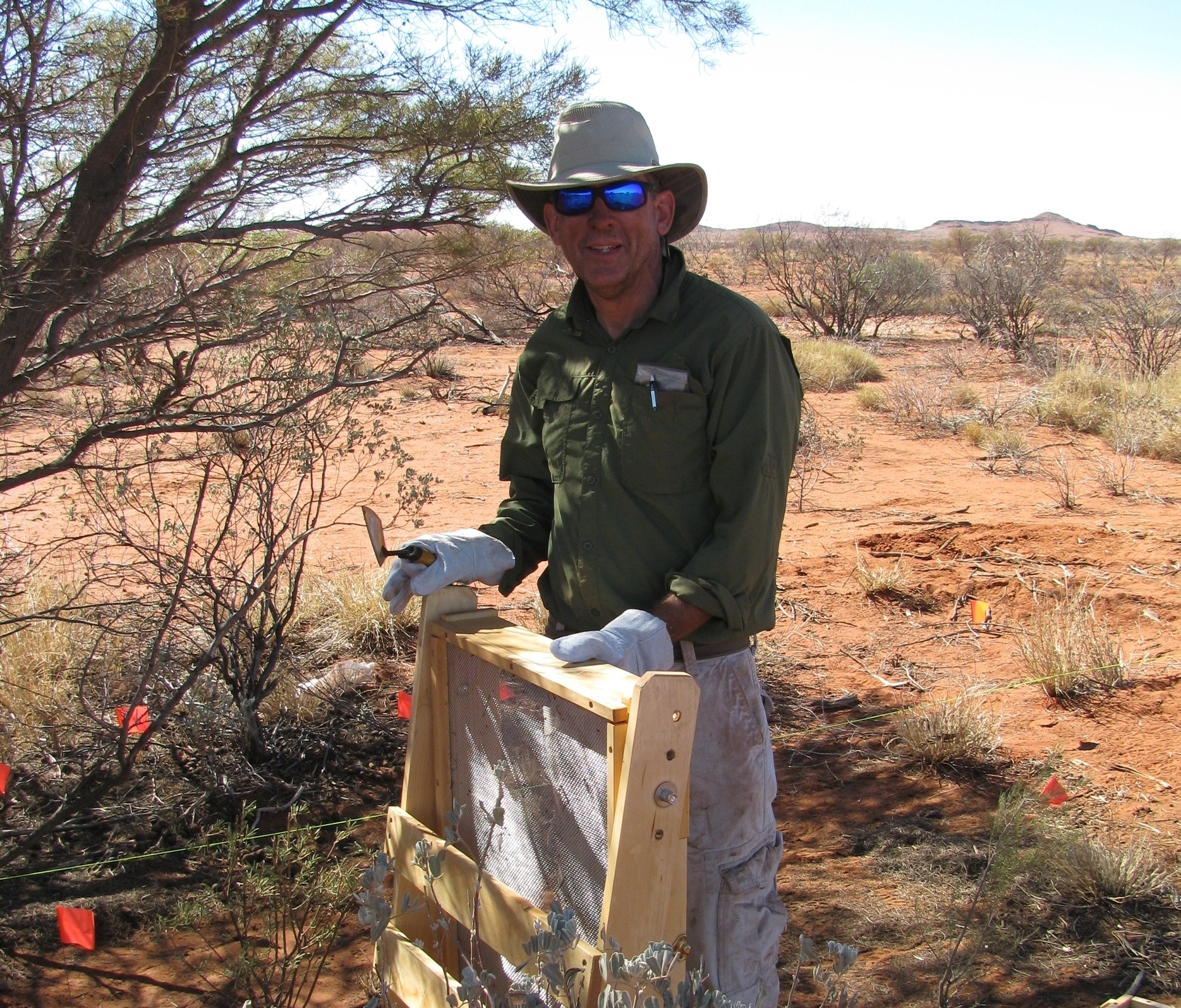 Anthropology Professor David Zeanah is pictured in Australia several years ago.
Anthropology Professor David Zeanah is pictured in Australia several years ago.In the heart of the Great Basin, 40 miles north of Austin, Nev., lies Grass Valley, where next summer Professor David Zeanah will run a four-week field school for Sacramento State archeology students.
The students will excavate materials from an ancient site and bring them to Sac State for study.
“This is the first case in a number of years that we’ll have the opportunity to actually put on a field class,” says Zeanah, who won a three-year, $194,000 National Science Foundation (NSF) grant to begin to understand how humans adapt to climate change.
“Grass Valley, Nev., is very unique from our perspective, because it’s a small valley that 14,000 years ago held a big lake but now is desert. Prehistoric materials indicate that people lived there sometime between 9,000 and 14,000 years ago. That’s a poorly understood time period of western North America pre-history,” he says.
Zeanah, a professor of anthropology at Sac State since 1999, has been on digs at the site, where he and fellow archeologists – from the University of Utah, the Far Western Anthropological Research Group, the University of Nevada-Reno, the Desert Research Institute in Reno, and Hamilton College – found stone tools and animal bone on the rim of the ancient lake basin. The area appears to have been a campsite at the end of this climatic period.
Next summer, Zeanah will take 10 undergraduate and five graduate students to Grass Valley for a four-week field class. They’ll camp above the University of Nevada’s Gund Ranch agricultural research station, and be able to use bunkhouses for food storage, cooking, and to do some initial analysis of found materials.
In the meantime, a group of Sacramento State graduate students will be working at the site.
“The people who lived there were some of the first people in western North America,” Zeanah says. “We believe they were in the Great Basin as far back as 14,000 years ago. And 8,000 to 9,000 years ago, the climate really shifted. It changed in a manner that’s a lot like global warming today.
“The people remained but changed their (way of life). We’re interested in understanding what it was like before and how did it change.”
Zeanah hopes to provide a better understanding of what it is to adapt to such situations.
“I don’t think practical knowledge will be gained about how to deal with climate change, but we will learn how climate changed the Great Basin in the past and how ancestral Native Americans adapted to those changes,” he says. “That will continue to better our understanding of the climate changes we face today.” – Dixie Reid
